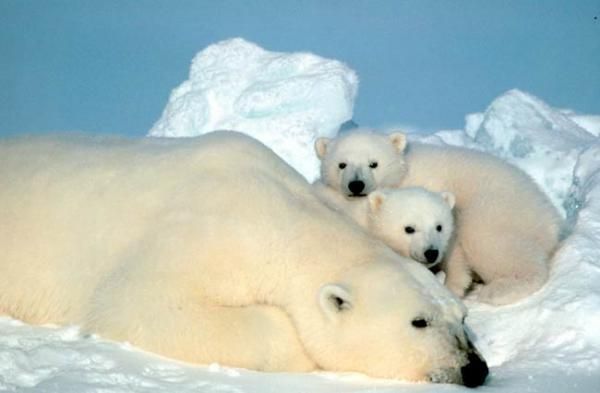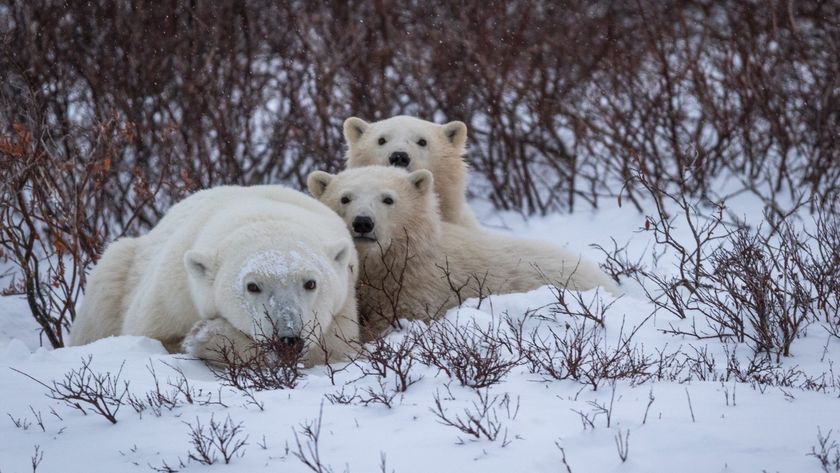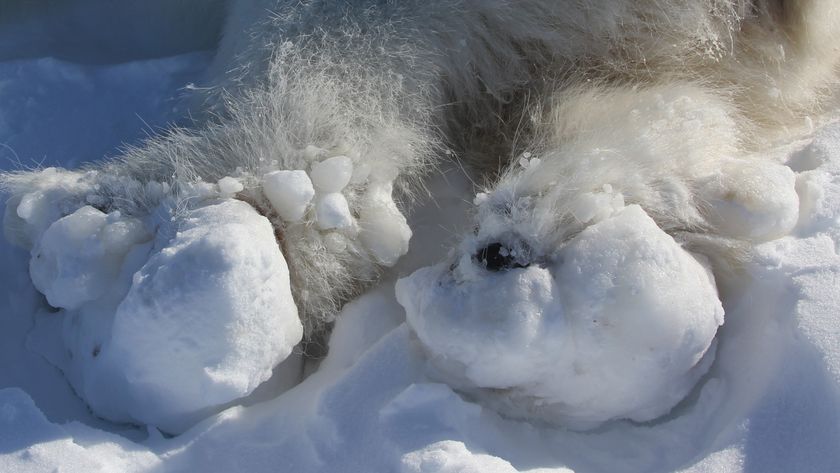Good News, Bears: Satellites Could Spy on Arctic Species

Satellite photos could be a promising way to track the habits of wildlife in remote, inaccessible parts of the Arctic, a new study finds.
By snapping satellite images of polar bears in the Canadian Arctic, researchers found they could gather information about the mammals almost as accurately as ground surveys, and at a decreased cost.
"The key finding and why we think [satellite technology] has a potential use as a tool is that there's pretty high concordance between the abundant estimate derived from aerial surveys and from satellite," said study co-author Todd Atwood, a wildlife biologist at the U.S. Geological Survey's Alaska Science Center in Anchorage. [Photos of Polar Bears Swimming in the Arctic]
With Arctic sea ice melting at a quicker pace in recent years, animals living in the region are losing the habitats they have relied on for years. Organizations have struggled to monitor the migrations of these animal populations, resulting in a lack of long-term data for species like the walrus, ribbon seal and polar bear, according to the International Union for Conservation of Nature (ICUN). This deficiency highlights the need to find alternative ways to monitor these animals.
Biologists at the University of Minnesota use satellites to capture images of polar bears in Foxe Basin, Nunavut, in the Canadian Arctic. Using these photos, the researchers identified 92 bears — a number that roughly matched the 77 bears counted in an aerial survey.
The researchers chose to focus on polar bears because the mammals are categorized as a threatened species by the IUCN; climate change, pollution and human activities have encroached on their natural living habitats.
But using satellite technology to monitor wildlife has its limitations. Aerial surveys can identify specific demographics, such as family groups and polar bear cubs, since planes can fly close to the ground. One aerial survey counted 28 polar bear family groups, while the satellites in orbit could spot only five.
Sign up for the Live Science daily newsletter now
Get the world’s most fascinating discoveries delivered straight to your inbox.
"I think we don't know if [satellite imagery] will change how we monitor mammal populations yet," Atwood told Live Science. Nevertheless, he says, the findings show satellites have their advantages.
"It's suggestive that we can use finely resolved satellites in some of the more remote parts of the planet where there are logistical issues that constrain or prohibit monitoring — this satellite image approach allows us a tool to monitor areas that we'd have a difficult time getting to," Atwood said.
And, while aerial surveys can be used to reach remote places, they are extremely costly.
In the past, researchers used satellite technologyto track populations of Weddel seals and the emperor penguins in Antarctica. But these previous studies lacked a way to compare data gathered by satellite compared to data gathered on the ground — making it hard to discern how promising satellite technology could be.
"I think the next step is to expand the scope of the area," Atwood said. "We chose Arctic Canada because there’s little topographical character, so it's easy to see the bears. So if those satellite techniques need to expand, we need areas with more complex topography and where bears aren't so easy to see.”
Atwood said researchers will also need to develop an algorithm or method to better analyze the satellite images. The findings were published online today (July 9) in the journal PLOS ONE.
Follow Jillian Rose Lim @jillroselim & Google+. Follow us @livescience, Facebook & Google+. Original article on Live Science.












